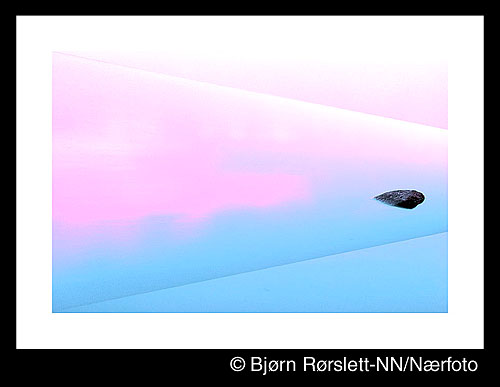| All You Ever Wanted to Know About Digital UV and IR Photography, But Could Not Afford to Ask | |
| by Bjørn Rørslett | |
| All You Ever Wanted to Know About Digital UV and IR Photography, But Could Not Afford to Ask | |
| by Bjørn Rørslett | |
1.
Introduction
Ultraviolet and infrared radiation have one thing in common: Our eyes cannot see these areas of the spectrum. Fortunately, these esoteric light rays can be recorded by other sensors, such as the CCD or CMOS found in digital cameras.
Welcome
to a world of making invisibility visible, as yet another means
of a visual expression. It is yours for the taking, so come on in
and have a new, refreshing look.
 |
When I acquired my first digital SLR camera - the Nikon D1 - back
in 1999, it didn't take me long to find out the CCD sensor might
record radiation outside the visible band (400 - 700 nm). This
was not mentioned in the camera manual and indeed Nikon
representatives denied it was possible, but who cares about
official policy when test images prove it false?
So far, I've used 9 different digital cameras, Nikon D1, D1"R" (more on this later), D1X, D1H, D2H, D2X, D70, D100, and Coolpix 950, for my forays into UV and IR photography. A friend has tried out Nikon Coolpix 5000, and the Fuji S2 Pro. Alle of them can be pressed into service for recording non-visible rays, but each reacts to the fringes of the recorded spectrum in different ways. The differences manifest themselves in the ensuing digital images, sometimes quite subtly, sometimes very obvious. I'll return to these issues later on in this article. I focus mainly on digital SLR cameras because I consider being able to change lenses is paramount for UV and IR work.
It should be realised that there cannot possibly be any "true" colour rendition of the irradiation outside the spectral band visible to our eyes. We are entirely free to select any colour scheme of our own liking. Thus, my images should not be compared directly to other people's pictures as far as colours are concerned. I have to stress this often neglected fact because many believe UV or IR has just one "correct" rendition, while in reality there are as many possibilities as you can imagine. Thus, seeing my pictures and stating "UV is rich in red" is meaningless (but people do this).
In general, I try to follow a UV rendition similar to that given by colour films. This is simply due to my commencing UV and IR work with film-based systems, long before digital recording was thinkable. Because film and digital sensors react quite differently to the non-visible rays, such images as recorded by a digital camera never correspond exactly to their film counterparts. Software plays an important rôle to this end and the importance of the various programs as to the final image rendition will be pursued in due time.
 |
| Dreamlike
landscapes are at your fingertips, simply by using a
combination of UV and IR imaging with your digital
camera. When UV and IR both contribute, the resulting
image takes on an eerie quality entirely of its own,
unique to the digital domain. I have tried, in vain, to
duplicate such shots with colour IR film. Nikon D1, 105 mm f/4.5 UV-Nikkor + Sankor Anamorphic lens, Nikon FF + Tiffen Hot-Mirror filters. Photo © Bjørn Rørslett/NN |
The following pages address the various issues which concerns the practice of shooting with invisible light. Read on to learn more. Best of all, you may even have most of the equipment already available. Many of the issues covered apply to film-based UV or IR photography as well, but the focus of the present arcticle is entirely on the potential of digital approaches. It will be readily apparent from the text whether the technique also applies to film-based photography. The illustrations accompanying this article originate mainly from Maridalen, a rural landscape adjacent to the city of Oslo where I live. Some of them are previously published on my site, while many are new.
There are quite a few tricks of the trade which I'm going to disclose as the story unfolds. Some of these are guaranteed to make you cringe, but don't despair, you only risk losing small amounts of money as it were. Balance that risk against all the potential fun shooting lying ahead and you know the way the scales will tip.